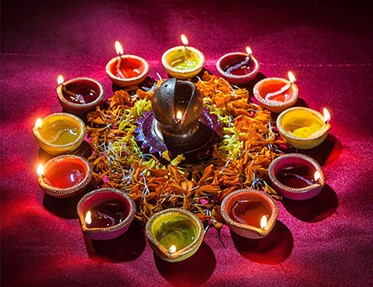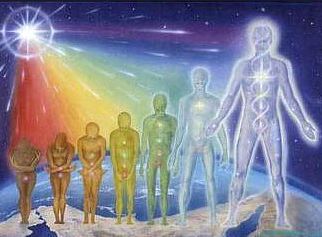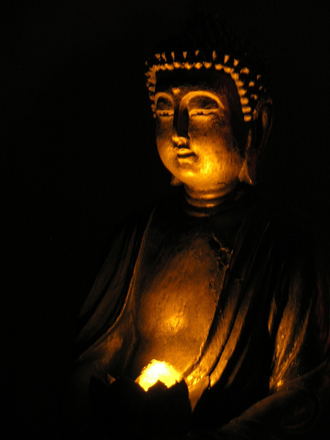Diwali is a very auspicious Hindu festival celebrated with a lot of enthusiasm and faith, across the world. Dhanteras is celebrated just two days before Diwali, and is made up of two Hindi/Sanskrit words – ‘Dhan’ which means wealth and ‘Teras’ which means the thirteenth day of the Moon’s cycle as Dhanteras falls on the thirteenth day of Kartika Krishna Paksha, as per the Hindu calendar.
As per 1st story. A great known sage named Durvasa once cursed Lord Indra saying “the pride of wealth has entered your head, let Lakshmi leave you”. This curse started realizing and Laxmi left him. It made him weak, and Asuras (demons) entered heaven and defeated Indra. After a few years, he visited Lord Brahma and Vishnu to seek. Lord Vishnu suggested for churning the ocean, sea of milk. Such a churning would bring Amrit (Nectar) and drinking it would have made the gods immortal. But devtas cant do alone so they had to take help of demons and they agreed. Vasuki, the king of the serpents became the rope and Mandara Mountain became the churning rod. Lord Vishnu became the avatar of a tortoise and lifted the Mandara Mountain. After the churning, Goddess Laxmi appeared with Kuber (god of wealth) and sages started chanting hymns and showered holy water on her. Towards the end, Lord Dhanvantari emerged with the Amrit, the nectar of immortality. He carried a vessel of nectar which Lord Vishnu gave to gods. Hence this day is also the birth anniversary of the God of Ayurveda, Dhanvantari.

Another mythological story as per legend is about the son of King Hima. Story says there was a King called Hima, his son was destined to die by a snake bite just four days after his marriage, as per his horoscope. King Hima tried his best to prevent his son from meeting any woman, but when the son turned 16, he fell in love with a girl and they married. After married, the young bride came to know of the fate and came up with a clever idea to save her husband by stalling Yama, the God of death. On the destined third night, his wife had her attendants light up earthern diyas inside her palace, bathing it in light. She also laid out all her jewellery, gems and silver coins outside her husband’s sleeping chamber. The bride princess was watchful all night, kept her husband awake by telling him stories, singing to him and involving him in a game of cards. All through the night she sang songs and told stories. When Lord Yama came at midnight in the form of a snake, he was dazzled by the precious ornaments gold etc and also he was so spell bound by the environment (the lights and the dazzling jewels, songs) that he could not go into the prince’s sleeping chamber and sat down on the heap. He stretched out on top of gold coins and listened to the princess’s stories and songs. He spent the entire night listening to the beautiful songs & stories. In the morning, Yama the snake, quietly slithered away, impressed with the commitment of the princess. The princes life was saved by his wife and this is why this day is then celebrated as Dhanteras. After this legend, there evolved a tradition purchasing gold and silver coins stamped with images of Goddess Lakshmi and Lord Ganesha on Dhanteras, and some even don’t sleep on night.
Auspicious time for buying Gold or other precious items
On Dhanteras, Hindus believe in purchasing new things like utensils, gold, home or vehicles signifying the arrival of Goddess Laksmi in our life. Since Hindus prefer to be guided by a mahurat (auspicious time) for any important activity even for precious purchases. Pushya Nakshatra and Dhanteras are the two most auspicious occasions when people can buy gold and precious metals. Pushya Nakshatra is ruled by Jupiter, who among the planets is the giver of wealth, and is also the birth star of Goddess Lakshmi. Therefore, due to its association with Lakshmi, Pushya is the most appropriate for buying gold and jewellery. When Pushya Nakshatra rises on a Thursday, it is called Guru Pushya Yoga and when it rises on Sunday, it creates the Ravi Pushya Yoga. As per Vedic astrology, both are auspicious days for buying gold.
The next day of Dhanteras is celebrated as “Yamadeepdan” or “Narak Chaturdashi” where the house is light up by “diyas” and light in every corner of the house and keep them burning throughout the night as a symbol of paying respect to Lord Yama, the god of death and praying for a happy, healthy and a prosperous life for their husband and family. This day is also known as “Choti Diwali” in various parts of the country. The Indian Ministry of Ayurveda, Yoga, Naturopathy, Unani, Siddha, and Homeopathy declared Dhanteras as the “National Ayurveda Day,” which was first celebrated on October 28, 2016.
Again Diwali & Dhanteras is not just about financial richness but it’s also about spiritual richness, and about family bonding & caring. It should be remembered that Goddess Laskhmi blesses with abundant inner wealth too and actually She holds the key to open our Sacred Hrit Padma Chakra at the very core of our Selves. Those interested in spiritual richness can instead turn inwards and enrich their spiritual wealth by immersing themselves in meditation, practice of yoga, Mantras and other religious sadhanas as this is an equally auspicious day for the practice of any of these and getting success. Diwali night is actually one of powerful night if you want to siddh mantras. An enlightened soul is more rich, and most often it also means becoming more settled in the material world too.
Traditionally, time around Diwali is a total consecutive 6 days of festival with various different occasions falling into. Below is a general idea.
Festivals around Diwali
Day 1 – Govatsa Dwadashi, Vasu Baras
Day 2 – Dhanteras, Dhanvantari Trayodashi
Day 3 – Yama Deepam, Kali Chaudas, Hanuman Puja, Tamil Deepavali, Narak Chaturdashi
Day 4 – Diwali Lakshmi Puja, Kedar Gauri Vrat, Chopda Puja, Sharda Puja, Diwali Snan, Diwali Devpuja
Day 5 – Dyuta Krida, Gowardhan Puja, Annakut Puja, Bali Pratipada, Gujrati New Year Celebration
Day 6 – Bhaiya Dooj, Bhau Beej, Yama Dwitiya
How to perform various important Puja for your overall Success
Dhantrayodashi or Dhanteras Puja is very significant in its invocation of Goddess Lakshmi, Lord Ganesha as well as the God of wealth Kuber, alla re worshipped in order to invite material abundance and blessings for success in life. Lord Dhanvantari is also worshipped on this day.
Ganesh Puja
On Dhanteras evening, Lord Ganesh is worshipped first. His idol is bathed and then anointed with sandal paste. Idol is placed on a red cloth, fresh flowers along with sweets are offered to Ganpati. Then incense and diya for worship is offered to the Idol with devotion and chanting mantras.
You can Chant the below mantra for Lord Ganesh and invoke his blessings to begin the Dhanteras Puja Vidhi.
Mantra to chant:
वक्रतुण्डमहाकायसूर्यकोटिसमप्रभ
(Vakra-Tunnda Maha-Kaaya Suurya-Kotti Samaprabha) ।
निर्विघ्नंकुरुमेदेवसर्वकार्येषुसर्वदा
(Nirvighnam Kuru Me Deva Sarva-Kaaryessu Sarvadaa ) ||
Meaning: O Sri Ganesha, of Curved Trunk, Large Body, and with the Brilliance of a Million Suns, Please Make All my Works Free of Obstacles, Always.
Kuber Puja
Lord Kubera is worshipped in the similar manner as per ritual with incense and flowers. Offer him incense, diya, fruits and sweets, then chant the following mantra and seek Lord Kuber’s blessings for wealth.
ओम यक्षाय कुबेराय वैश्रवणाय धनधान्यपदये
(Om Yakshaya Kuberaya Vaishravanaya Dhanadhanyadhipataye) |
धना-धनाय समुद्भूतं मे देहि दापय स्वाहा
(Dhanadhanyasamriddhim Me Dehi Dapaya Swaha) ||
Meaning: Kubera, the lord of yakshas, bless us with wealth and prosperity.
Worship the safe where you keep money and jewellery as a symbol of Lord Kuber.
Lakshmi Puja
The best time for Lakshmi Puja on Dhanteras or Dhantrayodashi is during the Pradosh Kaal which falls after sunset and lasts for about two and half hours. In addition to worshipping the Idol of Goddess Lakshmi, you can also worship and energise the Mahalakshmi Yantra, which has powerful vibrations of Devi Lakshmi.
Goddess Lakshmi’s idol is given a bath, then anointed with vermillion, and then offered nine different types of grains. A new piece of red cloth is offered to the Goddess which is kept on a raised platform. Also, purify the place by hitting splashes of Gangajal. Now place the idol or photo of Mata Mahalakshmi. Offer a lotus flower garland or a garland of red flowers to Goddess Lakshmi. A handful of grains is spread in the middle of the cloth. A kalash is also set up with– Gangajal (filling half of the kalash), betel nut, flower, coin, mango leaves, and rice grains. A lotus is then drawn using haldi or turmeric powder over the grains and Goddess Lakshmi’s idol is kept on it along with Lord Ganesha’s idol. After this, apply red vermillion on the idol of Mata. A lamp is lit, offer flowers to Goddess Lakshmi and Lord Ganesha.
Burn incense, lamps, and incense sticks. Meditate on the splendour of Lord Lakshmi.You can then chant the following mantra: Mahalakshmi.
You can chant the following mantra:
ओम श्रीं ह्रीं श्रीं श्रीं कमले कमलालये प्रसीद प्रसीद ओम श्रीं ह्रीं श्रीं महालक्ष्म्यै नमः
“Om Shreem Hreem Shreem Kamale Kamalalaye Praseed Praseed
Om Shreem Hreem Shreem Mahalakshmaye Namaha” ||
Meaning: Underlying Vibration of all creation, the Goddess of abundance, cherishing your lotus feet, be pleased Great Laxmi Goddess, I bow to You.
After the chanting, Goddess Lakshmi’s idol is kept on a plate and she is bathed with panchamrit. Take some flowers in your hands, close your eyes and think of Goddess Lakshmi being showered with gold coins by two elephants standing on Her either side and chant Her name. Then offer the flowers to the idol. Place the idol of Lakshmi in a plate and bathe it with water, panchamrit (a mixture of milk, curd, ghee or clarified butter, honey and sugar) and then with water containing some gold ornament or a pearl. Wipe the idol clean and place it back on the kalash. Alternately, you can just sprinkle water and panchamrit on the idol with a flower.
Then post the rituals, now it’s time for the devotes to read the Lakshmi Chalisa, Lakshmi Stuti, Lakshmi Stotra, and Lakshmi Narayan Hridaya Stotra with the true mind.
Finally, perform the Aarti for goddess Lakshmi. Devotees then worship Goddess Lakshmi, seeking her blessings for prosperity, success and happiness.
Dhanvantari Puja
Lord Dhanvantari is regarded as the founder of Ayurveda. People pray to Dhanvantari seeking cure of diseases and good health for their family. After the ritual of bathing Lord Dhanvantari and anointing his idol with vermillion, he is offered nine varieties of grains (Navadhanya). Now chant the mantra below.
Om Namo Bhagavate Maha SudharshanacVasudevaya Dhanvantaraye;
Amrutha Kalasa Hasthaaya Sarva Bhaya Vinasaya Sarva Roka Nivaranaya
Thri Lokya Pathaye Thri Lokya Nithaye Sri Maha Vishnu Swarupa Sri
Dhanvantri Swarupa Sri Sri Sri Aoushata Chakra Narayana Swaha ||
Meaning: We pray to the God, who is known as Sudarshana Vasudev Dhanvantari. He holds the Kalasha full of nectar of immortality. Lord Dhanvantri removes all fears and removes all diseases. He is the well-wisher and preserver of the three worlds. Like Lord Vishnu, Dhanvantari is empowered to heal the Jiva souls. We bow to the Lord of Ayurveda.
Yama Puja
Dhanteras puja also involves the worship of Lord Yama, the God of death. Lord Yama is honoured with Deep daan on this day for protection of one’s family and loved ones. After worshipping Yam Deva, 13 lamps should be lit.
Thirteen earthern lamps filled with sesame oil (til ka tale) should be placed outside the house, facing southwards (direction of Lord Yama), in the evening. A lamp or diya is usually never kept facing southwards except on this day so keep this difference in mind to help you.

Now recite the following mantra, a person should offer obeisance to Yama, the Lord of Death:
त्युना दण्डपाशाभयाां कालेन श्यामया सह।त्रयोदश्याां दीपदाना सूययजः प्रीयताां मम॥
Meaning: I offer these thirteen lamps to the son (Lord Yama) of the Sun deity (Surya), so that He liberates me from the clutches of death and bestows His blessings.
Dhantrayodashi Muhurat, as per Drik Panchang
| Sunrise | 02 November, 2021 06:36 AM. |
| Sunset | 02 November, 2021 05:44 PM. |
| Trayodashi Tithi Begins | 02 November, 2021 11:31 AM. |
| Trayodashi Tithi Ends | 03 November, 2021 09:02 AM. |
| Pradosh Kaal Timing | November 02, 05:44 PM – November 02, 08:18 PM |
Dhantrayodashi Muhurat for 2021, on November 2, as per Drik Panchang
| 2022 | Sunday, 23rd of October |
| 2023 | Friday, 10th of November |
| 2024 | Tuesday, 29th of October |
| 2025 | Saturday, 18th of October |
| 2026 | Friday, 6th of November |
| 2027 | Wednesday, 27th of October |
| 2028 | Sunday, 15th of October |
Pune: 06:47 PM to 08:32 PM
New Delhi: 06:17 PM to 08:11 PM
Chennai: 06:29 PM to 08:10 PM
Jaipur: 06:25 PM to 08:18 PM
Hyderabad: 06:30 PM to 08:14 PM
Gurgaon: 06:18 PM to 08:12 PM
Chandigarh: 06:14 PM to 08:09 PM
Kolkata: 05:42 PM to 07:31 PM
Mumbai: 06:50 PM to 08:36 PM
Bengaluru: 06:40 PM to 08:21 PM
Ahmedabad: 06:45 PM to 08:34 PM
Noida: 06:16 PM to 08:10 PM
We would be happy to answer any question or help further. You can reach at – info@shikti.com or drsantkj@gmail.com or through Online form., you can directly reach me on – (91) 8050720280.
Thank you for your time, Stay Blessed. – Dr Sant



Thanks for your blog, nice to read. Do not stop.